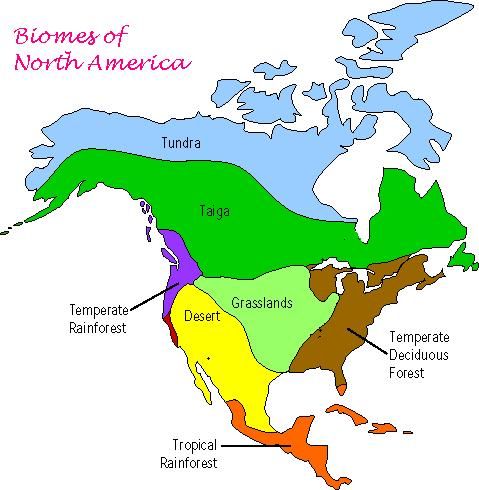Creating the Wild World of Nasci
All authors have to figure out their setting. For many urban fantasy writers, this can be as easy as picking a familiar city, such as Seattle or Houston. I also used real-world locations for my Magic of Nasci series, but it wasn't as easy as saying I wanted everything to take place in Siuslaw National Park in Oregon. I wanted a world where environmental wizards made sense. A shepherd that lived in the forest, for example, would manipulate the four elements (air, fire, earth, and water) differently than one who protected the desert. And to figure out how to divide the world (or North America at least), I turned to biomes.
A biome is a large area characterized by its vegetation, soil, climate, and wildlife. A tundra in Canada, for example, is very different from a tropical rainforest. Biomes can be spliced a few different ways, depending on who's classifying them, so I decided to go with this simple map:

The Talol Wilds, as I refer to Ina's shepherd territory in the books, is the temperature rainforest colored in purple. I picked Mount Rainier as an iconic natural feature of this biome, which is why I named the entire region after the Puyallup Native American word for the mountain.
If you know where Oregon is on this map, you'll see that the state is very neatly sliced in half, with the western half in the Talol Wilds. The other half is located in the northern part of the yellow desert biome, which I named the Bitai Wilds, after the Navajo name for the famous Shiprock formation in New Mexico. Having grown up in the Bitai Wilds (aka southern Idaho), I immensely enjoyed imagining how a shepherd might wield the elements differently in each region. You see this play out in Book 7, Gathering Swarm, with Wuaro and how he manipulates water.
The only other biome I've named is Guntram's original home, the Onyara Wilds, a derivative of the Iroquoian word for Niagara Falls in the brown temperature deciduous forest biome. If I continue the series, I'm sure I'll keep expanding my magical nature world even farther from its original roots in the Pacific Northwest.